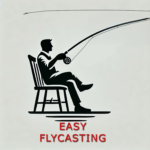
The source is a comprehensive introduction to fly fishing from Fly Fishers International (FFI), an American non-profit organization. It covers everything from the history of the fishery and equipment to casting techniques, knot tying, insect science (“entomology”), strategies, etiquette, and safety. The material also includes a detailed review of different types of flies and their uses, as well as information on fish stock conservation. FFI emphasizes fly fishing as a combination of skill, knowledge of nature, and community.
Fly Fishing Podcast Summary
●
Introduction: Fly fishing is a unique sport that uses hand-tied flies to imitate the food of fish. It differs from conventional fishing by using a line to cast the fly. Fly Fishers International (FFI) is an organization that promotes fly fishing through education, conservation, and community.
●
Equipment:
○
The fly rod is an essential tool for casting, handling fish, and line control. The weight of the rod should be appropriate for the type of fish you are fishing for.
○
The reel is used to store and control the line.
○
The line, leader, and tip are essential for presenting the fly naturally. The leader is typically tapered to transfer energy from the line to the fly efficiently. The tip is the final piece that ties the fly to the leader.
○
Waders and appropriate clothing are important for comfort on the water.
○
Accessories such as polarized sunglasses, pliers, nippers, and a landing net are useful.
●
Casting Techniques: The purpose of the cast is to present the fly, dry it, or change direction. The basic cast involves lifting the rod and bringing it back, with a pause for the line to unwind. Timing is crucial. Different types of casts include the roll cast and the false cast.
●
Knots: Proper knots are essential for connecting the line, leader, and fly securely. Some important knots include the clinch, improved clinch, uni, and non-slip. The double surgeon’s knot and double uni knot are used to add tippet.
●
Rigging: Basic rigging involves a floating line, a 9’ tapered leader, and a dry fly. Other rigs such as the nymph rig, dropper rig, and double dropper rig are used depending on the fishing situation.
●
The “fishing” part of fishing: It involves reading the water, finding the fish’s habitat, and understanding fish behavior. Studying entomology helps in choosing the right flies.
●
Catching the fish: It is important to set the hook correctly, reel in the fish and land it with or without a net. Handling and releasing should be done with respect for the fish.
●
Fish Behavior: Fish stay in different places in the water, depending on their needs for protection, food and rest. Water temperature, weather conditions and time of year also affect fish behavior.
●
Ethics and Safety: Fly fishermen must follow ethical guidelines, both on and off the water. Safety on the water is also an important factor.
●
Fly Tying: Tying your own flies is part of the sport of imitating insects. Tools such as a vise, bobbin holder and scissors are necessary.
●
Preparing for a fishing trip: Check the weather, research local conditions and make a packing list.
